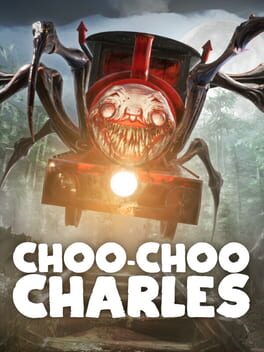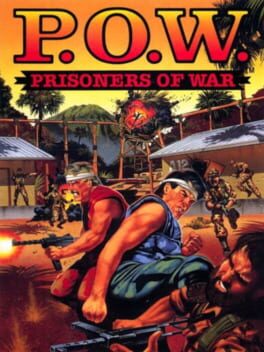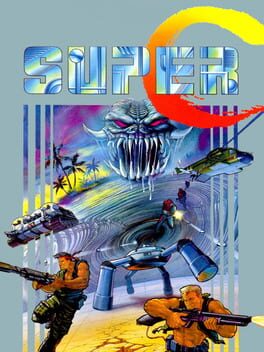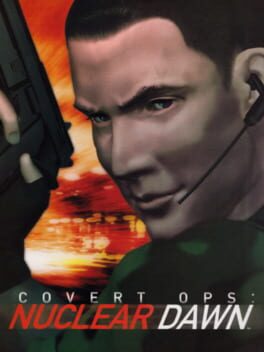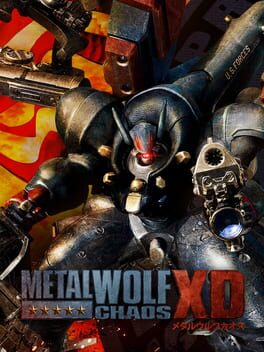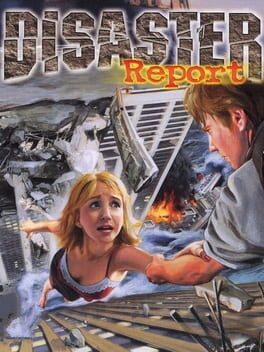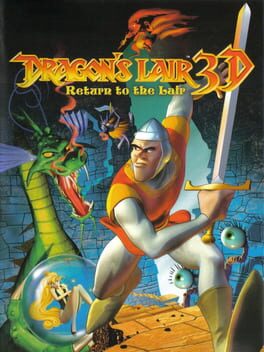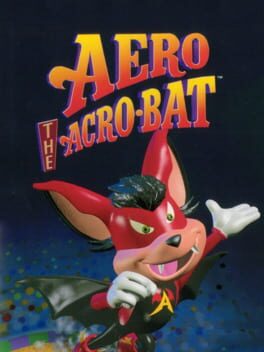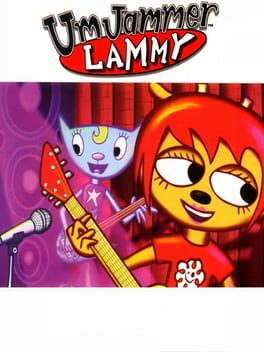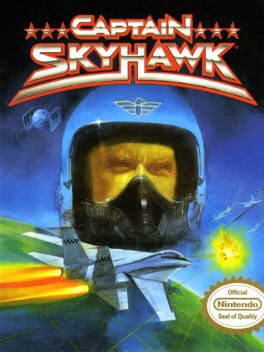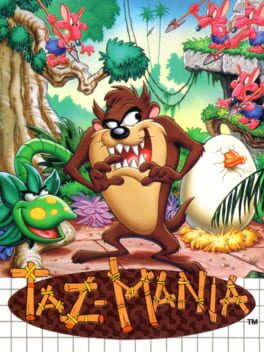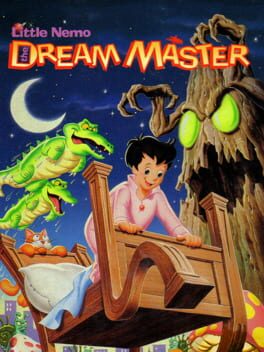TonyBlue87
BACKER
2022
If a train leaves one station heading East at 100 MPH and an indie dev leaves another heading West, how long will it take to complete the goofiest horror adventure game of the last few years? About 3 hours, it turns out, but what a fun 3 hours it is. With completely ridiculous NPCs (Pickle Lady, my beloved), a simply rendered yet eerie forest, and a fairly unsettling horrible train monster, Choo-Choo Charles is about as close as you can get to living inside a theme park ride. Even with very simple controls of forward, backward, and brake, rolling your train along the track in search of upgrade resources and another insane-voiced quest-giver is stupidly fun in a very "Disneyland dark ride" fashion.
There is a small amount of jank here and there, the PC version is a needless resource hog, and using your weapons against Charles feels like a mere suggestion (even fully upgraded, nothing seems to deter him other than an invisible in-game timer), but it moves at such a steady pace that you tend to forgive these shortcomings. Add in the fact that dying simply resets you back at your train having lost absolutely zero progress and it's a goofy little romp that can be easily 100%'d in a single sitting.
Choo-Choo Charles also features one of the absolute best "smash to end credits" moments in any video game, period. I actually cheered when the credits rolled as a perfect button to the game's completely ridiculous ending.
Born of memes and having just enough polish, you'll have a good time with this little demon engine.
There is a small amount of jank here and there, the PC version is a needless resource hog, and using your weapons against Charles feels like a mere suggestion (even fully upgraded, nothing seems to deter him other than an invisible in-game timer), but it moves at such a steady pace that you tend to forgive these shortcomings. Add in the fact that dying simply resets you back at your train having lost absolutely zero progress and it's a goofy little romp that can be easily 100%'d in a single sitting.
Choo-Choo Charles also features one of the absolute best "smash to end credits" moments in any video game, period. I actually cheered when the credits rolled as a perfect button to the game's completely ridiculous ending.
Born of memes and having just enough polish, you'll have a good time with this little demon engine.
P.O.W. is as standard a beat em up as they come. You punch, kick, and jump-kick your way through 4-and-a-half short levels to escape from a vaguely Vietnam-coded war camp. Enemy soldiers regularly volunteer to greet you foot-to-face as you send them flying backwards with a satisfying crash sound, while other lines of enemies parade on-screen, turn around to throw a knife nowhere near you, and walk off again. You can duck into rooms or trucks in the background to fight a handful of slightly stronger enemies. Beating them rewards power-ups like punch-enhancing brass knuckles or bullet-blocking body armor. Each level ends with a boss that will either be extremely easy or extremely cheap depending on how the RNG is feeling. Rinse, repeat, escape.
There's really not much else to the experience P.O.W. offers. Environments are nicely detailed, playing on a sort of "fake 3D" incline that offers some nice perspective. The music is a real standout, providing some head-bobbing underscore as you punch your 500th identical enemy. The chance for an enemy to drop their knife or machine gun gives you the opportunity to turn their weapons against them in a very satisfying, one-hit-kill deluge of screen-clearing fire (provided you line it up properly). Combat can be challenging if enemies surround you, but 9 times out of 10 you'll be stunlocking every enemy you encounter, oftentimes catching up to 3 enemies at once in the same flurry of punches and kicks.
Being a home-version of an arcade game, there are a few cheap deaths waiting for unsuspecting players. Taking a bullet or touching an explosion is a one-hit-kill, and one boss in particular makes use of both techniques as his only 2 attacks completely at random. Enemies will sometimes spam attacks if you are standing just above or below them, so a fair amount of combat is about disengaging so enemy pathfinding forces them to break out of their animations. A sequence involving flamethrower enemies is most survivable by tying a blindfold to your face and just praying while mashing jump-kicks.
The real trouble (and it's costing this game rating an entire star) is the final boss, who is genuinely broken. This is not an issue of fight design, it's busted programming. The boss moves with you horizontally 1-to-1, matching your inputs exactly, preventing you from closing the gap without pushing him against the edge of the screen. Worse than that, though, is his attack range seems to be roughly twice the size of his sprite distance, so there's no way to know whether your position is safe in the first place. The absolute worst, however, is his attack deals damage to you before the animation plays. The boss slides up to you, you fall backwards as you lose half your health, and then you see the attack animation play. Beating him is entirely arbitrary, and ends the game on a low note when it had been a perfectly serviceable beat em up right up until that moment.
The one saving grace around these issues is the inclusion of infinite continues. Continues start you at the beginning of each level, but in the case of the final boss, it's a very short hike to get another run at his broken nonsense. In a generation of games filled with limited continues and cheap deaths, it's a shockingly refreshing and empowering inclusion, especially as the checkpoints in the final level feel extremely fair. If you manage to power through to the end and escape, then, as the game says, "congraturation!"
There's really not much else to the experience P.O.W. offers. Environments are nicely detailed, playing on a sort of "fake 3D" incline that offers some nice perspective. The music is a real standout, providing some head-bobbing underscore as you punch your 500th identical enemy. The chance for an enemy to drop their knife or machine gun gives you the opportunity to turn their weapons against them in a very satisfying, one-hit-kill deluge of screen-clearing fire (provided you line it up properly). Combat can be challenging if enemies surround you, but 9 times out of 10 you'll be stunlocking every enemy you encounter, oftentimes catching up to 3 enemies at once in the same flurry of punches and kicks.
Being a home-version of an arcade game, there are a few cheap deaths waiting for unsuspecting players. Taking a bullet or touching an explosion is a one-hit-kill, and one boss in particular makes use of both techniques as his only 2 attacks completely at random. Enemies will sometimes spam attacks if you are standing just above or below them, so a fair amount of combat is about disengaging so enemy pathfinding forces them to break out of their animations. A sequence involving flamethrower enemies is most survivable by tying a blindfold to your face and just praying while mashing jump-kicks.
The real trouble (and it's costing this game rating an entire star) is the final boss, who is genuinely broken. This is not an issue of fight design, it's busted programming. The boss moves with you horizontally 1-to-1, matching your inputs exactly, preventing you from closing the gap without pushing him against the edge of the screen. Worse than that, though, is his attack range seems to be roughly twice the size of his sprite distance, so there's no way to know whether your position is safe in the first place. The absolute worst, however, is his attack deals damage to you before the animation plays. The boss slides up to you, you fall backwards as you lose half your health, and then you see the attack animation play. Beating him is entirely arbitrary, and ends the game on a low note when it had been a perfectly serviceable beat em up right up until that moment.
The one saving grace around these issues is the inclusion of infinite continues. Continues start you at the beginning of each level, but in the case of the final boss, it's a very short hike to get another run at his broken nonsense. In a generation of games filled with limited continues and cheap deaths, it's a shockingly refreshing and empowering inclusion, especially as the checkpoints in the final level feel extremely fair. If you manage to power through to the end and escape, then, as the game says, "congraturation!"
1990
Super C is a great follow-up to the original Contra. Everything gets an upgrade: the backgrounds and sprites are bigger and more detailed, the music gets broader range with bassy orchestra hits, and levels are given more varied layouts with vertical and horizontal traversal within the same environment. The pseudo-3D hallway crawls of the first game are replaced with far more challenging and interesting top-down levels that would later be even more intense in Contra 3. The standard run, jump, n' shoot formula is just as strong as ever, with Spread still being the "Activate Easy Mode" weapon of choice.
It's not all glorious warfare for Bill and Lance, though, as there are a few elements that hold it back from a perfect experience. Enemies love to spawn from behind you on the edge of the screen and catch you off guard. Some environmental gimmicks/mechanics can lock you in an inescapable death loop if you get an unfortunate pattern, particularly on the "downward" vertical levels with blind drops. Most unfortunate of all, however, is bosses offer practically zero challenge. Most of them are motionless (albeit impressively designed) full-screen monster towers, but only 3 out of 8 require you to do any real dodging maneuvers. One boss in particular can be beaten without moving at all, since your attacks destroy theirs. If you have Spread going into any of these fights, the bosses might as well have not even bothered showing up to work that day for how quickly they're dispatched.
Super C does exactly what you want out of a sequel: gives you a slightly better, slightly more challenging expansion of the game that came before it. Even with a few old-school game design flaws hanging about, it's still one of the absolute best action games on the NES.
It's not all glorious warfare for Bill and Lance, though, as there are a few elements that hold it back from a perfect experience. Enemies love to spawn from behind you on the edge of the screen and catch you off guard. Some environmental gimmicks/mechanics can lock you in an inescapable death loop if you get an unfortunate pattern, particularly on the "downward" vertical levels with blind drops. Most unfortunate of all, however, is bosses offer practically zero challenge. Most of them are motionless (albeit impressively designed) full-screen monster towers, but only 3 out of 8 require you to do any real dodging maneuvers. One boss in particular can be beaten without moving at all, since your attacks destroy theirs. If you have Spread going into any of these fights, the bosses might as well have not even bothered showing up to work that day for how quickly they're dispatched.
Super C does exactly what you want out of a sequel: gives you a slightly better, slightly more challenging expansion of the game that came before it. Even with a few old-school game design flaws hanging about, it's still one of the absolute best action games on the NES.
Covert Ops beat "Resident Evil on a train" by a full 2 years, and that comparison is appropriate from engine to caboose. Inventory juggling, (very) limited ammo, "bad" voice acting, a story that barely tracks, it's all here in PS1 glory. The high-espionage adventure of Jack Morton on a nuclear train speeding its way to Paris features all the standard trappings of the RE series but with an action movie wrapper, and honestly it works better than one might expect. There's no guesswork in the combat as giant crosshairs indicate both a proper lock and the amount of critical damage each shot will deal. The story moves at a rapid pace that never lets up and keeps the twists coming with branching paths. The game's limited physical setting also means it's genuinely one of the best-looking games from the generation, with the added flash of a rotating camera on pre-rendered backgrounds.
It's not all meal service and great scenery, though. A number of typical PS1-era issues rear their ugly heads. The aforementioned limited ammo is so limited that it can become literally impossible to finish the game. Enemies seem to drop predetermined items, meaning that every bullet fired is gone forever. This is exasperated by the fact that enemies respawn, and in a game where the nature of the story has you running back and forth between the same 10-15 rooms, you'll be doing a lot of unavoidable hallway shooting and begging the enemy corpse to flicker away to reveal a magazine (it won't). That's an even bigger bummer when you run into one of the impressively unfair boss fights. Bosses often have screen-covering attacks that tank controls are absolutely not equipped to handle, with long invincibility periods between successful hits from the player. Beating bosses is less about reactive gunplay and more about learning which loop of shoot>dodge roll>dodge back>shoot you need to employ to "outsmart" their programming. They also tend to come without warning, so God help you if you haven't saved. Lastly, on the story end, every "twist" is about as obvious as a tunnel painted on a wall and the plot holes are so big you could... well, drive some sort of large, automotive commerce vehicle through them.
Covert Ops is kind of a perfect PS1 game. It contains all the elements people associate with the generation: surprisingly impressive graphics, clunky tank control combat, a wide cast of characters with all the wrong accents. It's far from a masterpiece, but if you're looking for obscure survival "horror" games, you could choo choo choose worse.
It's not all meal service and great scenery, though. A number of typical PS1-era issues rear their ugly heads. The aforementioned limited ammo is so limited that it can become literally impossible to finish the game. Enemies seem to drop predetermined items, meaning that every bullet fired is gone forever. This is exasperated by the fact that enemies respawn, and in a game where the nature of the story has you running back and forth between the same 10-15 rooms, you'll be doing a lot of unavoidable hallway shooting and begging the enemy corpse to flicker away to reveal a magazine (it won't). That's an even bigger bummer when you run into one of the impressively unfair boss fights. Bosses often have screen-covering attacks that tank controls are absolutely not equipped to handle, with long invincibility periods between successful hits from the player. Beating bosses is less about reactive gunplay and more about learning which loop of shoot>dodge roll>dodge back>shoot you need to employ to "outsmart" their programming. They also tend to come without warning, so God help you if you haven't saved. Lastly, on the story end, every "twist" is about as obvious as a tunnel painted on a wall and the plot holes are so big you could... well, drive some sort of large, automotive commerce vehicle through them.
Covert Ops is kind of a perfect PS1 game. It contains all the elements people associate with the generation: surprisingly impressive graphics, clunky tank control combat, a wide cast of characters with all the wrong accents. It's far from a masterpiece, but if you're looking for obscure survival "horror" games, you could choo choo choose worse.
2019
Metal Wolf Chaos is incredible and terrible in equal measure across every element. The story concept is completely insane and hilarious, but the game feels like it's missing 80% of the cutscenes that explain how anything gets from one point to another. There's a point where you talk to a character, it fades to black, and in the next cutscene they've been kidnapped and ask if you can ever forgive them for betraying you. There is zero explanation for this series of events and it is never addressed afterwards. The voice acting is "terrible" in the best way, but the writing itself is clunky with abysmal broken English and lines of dialogue that get cut off mid-sentence. The action is completely over the top and it feels great to save America by blowing most of it up, but weapons do a seemingly random amount of damage on every shot, anything that's not a rocket launcher is effectively useless, and the bosses have unbelievably cheap attacks that tear through your health faster than an executive order. A total lack of checkpoints guarantees you'll be slogging through entire levels, bracing for the return of a boss' third-phase invisible attack.
To the outside observer, Metal Wolf Chaos is loud, obnoxious, deliriously over-the-top, with explosions and patriotism as far as the eye can see. To the player, it's a series of half-baked systems designed to undermine the entire experience and, in some ways, actively work against its enjoyment.
To put it simply: it's the perfect American game.
To the outside observer, Metal Wolf Chaos is loud, obnoxious, deliriously over-the-top, with explosions and patriotism as far as the eye can see. To the player, it's a series of half-baked systems designed to undermine the entire experience and, in some ways, actively work against its enjoyment.
To put it simply: it's the perfect American game.
2002
Disaster Report is much like the island it takes place on: shaky, uneven, full of cracks, and a man-made wonder. It's about as standard an adventure game as they come; walk around, find an item, use item on "door," repeat. Characters are all one-note, with lines of dialogue delivered in wildly different tones and volumes within a single conversation. Time is split between wandering around looking for a single key item to progress and running away from collapsing rubble, rushing waves, or tumbling trucks, and it's all achieved with not-the-jankiest-but-damn-close controls from the generation. The lack of direct camera control will kill you more than any natural disaster. You have the ability to call out to NPCs, which makes them wave at you and literally nothing else. You have to drink water to do actions and maintain health, but on Normal difficulty water is in such high supply that you will only ever die from one-hit "event" kills rather than taking damage from the world around you. Fortunately, checkpoints are frequent, so you're never losing too much progress whenever you think you're watching a cutscene but were, in fact, supposed to be running away from the random tsunami.
Despite the uneven experience of actually playing it, it all strangely works together to make a unique and charming game. The story is revealed in little chunks that are paced out pretty well, adding mystery to what was originally just a survival story. Of course for every reveal there is something that makes absolutely no sense (like villains inexplicably refusing to spend a bullet on your character because it will "take too long") that adds to the wacky tone and nature of the whole experience. There are multiple endings depending on certain actions you take, complete with a path-split decision halfway through the game to follow different characters, and they range from ridiculous to abrupt to depressing.
There is a lot of love put into Disaster Report, and as a result there is a lot to love about it. Everything moves along at a decent pace, characters are simultaneously over the top and endearing, and there's very little of the game that's outright busted so much as just unpolished. In all honesty, the game gets more of a 2.5 star rating from a gameplay perspective, but I'm awarding it a full extra star for including the most insane cutscene involving two old men on a rooftop to ever be portrayed in media.
Despite the uneven experience of actually playing it, it all strangely works together to make a unique and charming game. The story is revealed in little chunks that are paced out pretty well, adding mystery to what was originally just a survival story. Of course for every reveal there is something that makes absolutely no sense (like villains inexplicably refusing to spend a bullet on your character because it will "take too long") that adds to the wacky tone and nature of the whole experience. There are multiple endings depending on certain actions you take, complete with a path-split decision halfway through the game to follow different characters, and they range from ridiculous to abrupt to depressing.
There is a lot of love put into Disaster Report, and as a result there is a lot to love about it. Everything moves along at a decent pace, characters are simultaneously over the top and endearing, and there's very little of the game that's outright busted so much as just unpolished. In all honesty, the game gets more of a 2.5 star rating from a gameplay perspective, but I'm awarding it a full extra star for including the most insane cutscene involving two old men on a rooftop to ever be portrayed in media.
Dirk the Daring makes the transition to 3D with all the grace and elegance of... well, Dirk the Daring. Dragon's Lair 3D has the feel of one of "those games." The kind from this generation where it all works functionally and there's a clear amount of love put into it, but lacking any polish. Combat is extremely clunky, every enemy is programmed to stun lock you, jump inputs are often a suggestion, and audio bugs from huge differences in volume to sounds playing randomly in the background fill nearly every moment of the experience. In a very unintentional way, these flaws keep a lot of the "spirit" of the original FMV game alive. It's frustrating and often unclear what you did wrong or what was actually meant to happen.
All that said, it still works as an action-platformer. For the parts that work, there's a decent amount of charm in Dirk's character and animation, the environments are simple but vibrantly colored, and the cel-shaded graphics hold up decently (with the exception of Daphne, who appears to be made of 6 thick black lines fighting with each other for dominance). It's not the most compelling game in the world, and it gets very aggravating in the back-half when they start adding "new" content that goes beyond the ending of the original game, but there's a decent little adventure here led by one of gaming's more endearing heroes.
All that said, it still works as an action-platformer. For the parts that work, there's a decent amount of charm in Dirk's character and animation, the environments are simple but vibrantly colored, and the cel-shaded graphics hold up decently (with the exception of Daphne, who appears to be made of 6 thick black lines fighting with each other for dominance). It's not the most compelling game in the world, and it gets very aggravating in the back-half when they start adding "new" content that goes beyond the ending of the original game, but there's a decent little adventure here led by one of gaming's more endearing heroes.
1994
Sparkster on SNES is a decent follow up to the original Rocket Knight Adventures on Genesis (my favorite game of all time, so there is a healthy amount of nostalgia bias at play here). The rocket rodent has a snappier move-set with an air dodge to escape midair dangers, the music carries a strong energy (for the most part), and the game speed clips along with a solid performance throughout.
What's missing, however, is the focused level design, thematic links between stages, and imposing bosses. Whereas Sparkster himself seems to have been given thought about his controls, everything else about the game feels very generic. The first few stages seem to have decent through-lines, but then Sparkster is suddenly in a random pyramid maze followed by a sky filled with giant musical instruments for some reason. Every boss falls completely flat, lacking any of the detailed design or weight of the original, with the worst offender being the final boss. RKA ended with a cinematic final level featuring a reveal that the main bad guy was just a robot decoy, a fantastic duel against Axel, an extremely intense low-grav fight against the "brain" of the ship, and a harrowing escape back into the atmosphere of the planet. Sparkster on the SNES has a small lion jump back and forth while throwing lightning. I heard there was more to the ending on Hard Mode, but I've looked it up and all you do is attack a motionless generator to blow up a missile. Hardly the energy of the epic conclusion from the original.
Overall, Sparkster feels mostly "safe." The titular possum just breezes through levels and bosses without much trouble, never really for any particular reason. It's still a fun action platformer, but the Rocket Knight spirit lasted for exactly one game. Still, if you're going to play a game called "Sparkster," make it the one on SNES, because there's even less magic in the other one on Genesis.
What's missing, however, is the focused level design, thematic links between stages, and imposing bosses. Whereas Sparkster himself seems to have been given thought about his controls, everything else about the game feels very generic. The first few stages seem to have decent through-lines, but then Sparkster is suddenly in a random pyramid maze followed by a sky filled with giant musical instruments for some reason. Every boss falls completely flat, lacking any of the detailed design or weight of the original, with the worst offender being the final boss. RKA ended with a cinematic final level featuring a reveal that the main bad guy was just a robot decoy, a fantastic duel against Axel, an extremely intense low-grav fight against the "brain" of the ship, and a harrowing escape back into the atmosphere of the planet. Sparkster on the SNES has a small lion jump back and forth while throwing lightning. I heard there was more to the ending on Hard Mode, but I've looked it up and all you do is attack a motionless generator to blow up a missile. Hardly the energy of the epic conclusion from the original.
Overall, Sparkster feels mostly "safe." The titular possum just breezes through levels and bosses without much trouble, never really for any particular reason. It's still a fun action platformer, but the Rocket Knight spirit lasted for exactly one game. Still, if you're going to play a game called "Sparkster," make it the one on SNES, because there's even less magic in the other one on Genesis.
This review contains spoilers
Legacy of Kain: Soul Reaver tells the story of Raziel, mouthless, blue vampire boy, facing his greatest foe: box pushing puzzles. Ok, actually it tells the story of... well, it tells PART of the story of Raziel's fight with Kain, his former vampire boss. He enacts this battle by hunting down his brothers-in-arms, devouring their souls to gain new abilities, Metroidvania style, to explore more areas of a large, interconnected world, all the while being guided by a faceless elder god who never really explains why any of this is happening.
Soul Reaver comes from that magical turning point in gaming history where developers realized that voice acting could actually be good, and this is by far the best part of the game. Characters speak in pseudo-Shakespearean riddles about betrayal and purpose with a level of seriousness that adds proper weight to the setting, bordering juuuuuust on the edge of being a little too edgy for its own good. All the performances hold up even by today's standards, particularly Raziel's self-serious, single-minded internal monologue. It's all pretty one-note, but it's a good note that suits the Gothic goings-ons. Unfortunately, no amount of high-quality acting can outplay the lesser parts of the game.
Soul Reaver is a lot of old game design wrapped up in much prettier packaging. Raziel's adventure takes place in one massive environment with no visible loading screens. Teleportation gateways serve as shortcuts around the world, but even those hide any perceptible loading of assets. It's an extremely impressive technical feat for a game of this size from 1999. Raziel travels through swirling lakes, vampiric temples, and a massive cathedral that is, in fact, a giant pipe organ of sorts. It's all very unique, but the creativity was spent entirely on these settings and not so much on what to fill them with. Despite the sprawling environments and varied enemies that inhabit them, the main thing Raziel spends his time doing is pushing boxes. Literally every level has multiple box pushing puzzles. Every so often he'll flip a switch or pull a lever, put it's usually in service of getting Raz to the next bunch of boxes to push. It's tedious and wears thin almost immediately. Credit where it's due, most of the overall puzzles are built into the environment itself, being a part of the natural setting, but rounding the corner to see another stack of boxes just waiting for Raz to push around is sigh-inducing.
When he's not pushing boxes, Raziel is leaping, climbing, or swimming around the world. He can swap between the physical and material planes pretty much at will (returning to the physical world requires using a highlighted spot in the environment), and the area around him can shift dramatically between either version. It's a neat idea and offers some cool visuals, but both realms are stuck with Raziel's dated controls and camera. He often slides to a stop, turns in wide circles, and decides randomly when to use his high jump, making precision platforming more aggravating than rewarding. Add a camera that usually wants to be as close to Raz as possible and it all becomes a harsh reminder of how early 3D platformers played.
Fortunately, levels culminate in a boss "battle" against one of Raziel's brothers, and most of these are memorable high points of the journey. Very rarely is a fight won with brute strength. The majority of Raz's brothers are bested with some sort of creative puzzle solution, turning their powers back against them. It's a satisfying way of defeating these creatures that have been twisted and deformed by the passing of hundreds of years, whose sole purpose seems to be betting Raziel that he can't kill them. Each time he proves them wrong, he absorbs their soul and special ability, which enables him to traverse more parts of the environment, tracking down Kain to his final hideaway.
At the end, however, all of this fratricide leads to a great big reveal of... nothing. The game's story ends with a defeating "To Be Continued..." text screen. Nothing is answered, nothing is explained, no one ever speaks in any specifics. Raziel is never clued into anything that Kain is actually up to, and is instead forced to, I assume, get answers in the sequel that wouldn't appear until the PS2. It's a deeply unsatisfying ending that comes at a point when things seem to be picking up, not concluding.
Legacy of Kain: Soul Reaver is rightfully remembered for terrific voice acting, dramatic presentation, and gorgeous environment and character design. It's rightfully less remembered for its janky controls, repetitive combat, and abundance of box pushing puzzles. Overall it's a memorable experience that shows off some of the best that the PS1 era had to offer, but, much like the beginning of Raziel's tale, many years have passed and many things have changed in the world of games, making it a worthwhile journey with a heavy dose of caveats.
Soul Reaver comes from that magical turning point in gaming history where developers realized that voice acting could actually be good, and this is by far the best part of the game. Characters speak in pseudo-Shakespearean riddles about betrayal and purpose with a level of seriousness that adds proper weight to the setting, bordering juuuuuust on the edge of being a little too edgy for its own good. All the performances hold up even by today's standards, particularly Raziel's self-serious, single-minded internal monologue. It's all pretty one-note, but it's a good note that suits the Gothic goings-ons. Unfortunately, no amount of high-quality acting can outplay the lesser parts of the game.
Soul Reaver is a lot of old game design wrapped up in much prettier packaging. Raziel's adventure takes place in one massive environment with no visible loading screens. Teleportation gateways serve as shortcuts around the world, but even those hide any perceptible loading of assets. It's an extremely impressive technical feat for a game of this size from 1999. Raziel travels through swirling lakes, vampiric temples, and a massive cathedral that is, in fact, a giant pipe organ of sorts. It's all very unique, but the creativity was spent entirely on these settings and not so much on what to fill them with. Despite the sprawling environments and varied enemies that inhabit them, the main thing Raziel spends his time doing is pushing boxes. Literally every level has multiple box pushing puzzles. Every so often he'll flip a switch or pull a lever, put it's usually in service of getting Raz to the next bunch of boxes to push. It's tedious and wears thin almost immediately. Credit where it's due, most of the overall puzzles are built into the environment itself, being a part of the natural setting, but rounding the corner to see another stack of boxes just waiting for Raz to push around is sigh-inducing.
When he's not pushing boxes, Raziel is leaping, climbing, or swimming around the world. He can swap between the physical and material planes pretty much at will (returning to the physical world requires using a highlighted spot in the environment), and the area around him can shift dramatically between either version. It's a neat idea and offers some cool visuals, but both realms are stuck with Raziel's dated controls and camera. He often slides to a stop, turns in wide circles, and decides randomly when to use his high jump, making precision platforming more aggravating than rewarding. Add a camera that usually wants to be as close to Raz as possible and it all becomes a harsh reminder of how early 3D platformers played.
Fortunately, levels culminate in a boss "battle" against one of Raziel's brothers, and most of these are memorable high points of the journey. Very rarely is a fight won with brute strength. The majority of Raz's brothers are bested with some sort of creative puzzle solution, turning their powers back against them. It's a satisfying way of defeating these creatures that have been twisted and deformed by the passing of hundreds of years, whose sole purpose seems to be betting Raziel that he can't kill them. Each time he proves them wrong, he absorbs their soul and special ability, which enables him to traverse more parts of the environment, tracking down Kain to his final hideaway.
At the end, however, all of this fratricide leads to a great big reveal of... nothing. The game's story ends with a defeating "To Be Continued..." text screen. Nothing is answered, nothing is explained, no one ever speaks in any specifics. Raziel is never clued into anything that Kain is actually up to, and is instead forced to, I assume, get answers in the sequel that wouldn't appear until the PS2. It's a deeply unsatisfying ending that comes at a point when things seem to be picking up, not concluding.
Legacy of Kain: Soul Reaver is rightfully remembered for terrific voice acting, dramatic presentation, and gorgeous environment and character design. It's rightfully less remembered for its janky controls, repetitive combat, and abundance of box pushing puzzles. Overall it's a memorable experience that shows off some of the best that the PS1 era had to offer, but, much like the beginning of Raziel's tale, many years have passed and many things have changed in the world of games, making it a worthwhile journey with a heavy dose of caveats.
1993
Aero the Acro-bat is a three ring circus of bullshit with all the show-stopping trademarks of a failed mascot platformer: slippery momentum, uneven enemy hitboxes, a character that outruns the camera at full speed and runs into enemies you never saw coming, and an endless supply of one-hit-kill traps hidden off-screen. You will launch yourself out of a cannon and into a spike trap you had no way of knowing about dozens of times. You will have no idea how many hits some enemies take, or if they're even taking damage at all. And you will restart the multiple autoscroller sections again and again and again.
There are a few high points in the game, though. For one, the music is fantastic throughout. Nearly every level has a completely unique track, and they all have great energy and arrangement. Secondly, the game puts extra lives absolutely everywhere, almost as if they knew the general gameplay was unfair. Lastly, the final boss fight is genuinely exciting, with timed platforming and multiple phases that are checkpointed fairly. It does last a bit too long, but it's a high point to end an otherwise extremely middling experience.
Aero wants to be the next big mascot, but he's just another victim of the 90s "rad" era, with his sunglasses and moonwalking not being nearly enough to distract from a game that's just not all that fun to play. When it's not being outright unfair, it's just downright "okay." This star of the big top is a big flop.
There are a few high points in the game, though. For one, the music is fantastic throughout. Nearly every level has a completely unique track, and they all have great energy and arrangement. Secondly, the game puts extra lives absolutely everywhere, almost as if they knew the general gameplay was unfair. Lastly, the final boss fight is genuinely exciting, with timed platforming and multiple phases that are checkpointed fairly. It does last a bit too long, but it's a high point to end an otherwise extremely middling experience.
Aero wants to be the next big mascot, but he's just another victim of the 90s "rad" era, with his sunglasses and moonwalking not being nearly enough to distract from a game that's just not all that fun to play. When it's not being outright unfair, it's just downright "okay." This star of the big top is a big flop.
1999
If Parappa the Rapper is a low-level drug trip groove through an increasingly weird week, then Um Jammer Lammy is the ecstasy-laced fever dream weekend. The story follows Lammy trying to get to her band's gig on time but constantly running into characters who insist she helps them with their high-stress jobs. Things move at such a frantic pace that it's difficult to have any idea what's going on. Characters are constantly yelling, cutscenes have 5 edits every second, and, unlike Parappa's story beats, Lammy's hurdles are completely random and unrelated to her personally, so it's just a blur of complete chaos. Unfortunately, that carries into the gameplay itself.
Lammy's music is seemingly written to be intentionally confusing. Nearly every song is plagued by bizarre time signatures, button prompts that don't match the cadence of the lyrics, and segments that require a level of speed and button-mashing that Parappa never came close to. This game also amplifies a problem in the first game: the small delay between pressing a button and the audio of Lammy's guitar actually playing makes it absolutely impossible to keep time consistently. Most levels feel like they're won with dumb luck, especially Level 6 that features an atonal, arhythmic stage aria. Most times failure comes at the very last moment of a song, forcing you to start from the top and struggling against the game's design again and again.
Um Jammer Lammy feels like it learned all the wrong lessons from Parappa, which already had its own issues. Chaotic in every way, from story to gameplay, Lammy frustrates and annoys with each new riff screamed at you by another anthropomorphic psychopath. Much like Lammy's guitar, this game is out of tune.
Lammy's music is seemingly written to be intentionally confusing. Nearly every song is plagued by bizarre time signatures, button prompts that don't match the cadence of the lyrics, and segments that require a level of speed and button-mashing that Parappa never came close to. This game also amplifies a problem in the first game: the small delay between pressing a button and the audio of Lammy's guitar actually playing makes it absolutely impossible to keep time consistently. Most levels feel like they're won with dumb luck, especially Level 6 that features an atonal, arhythmic stage aria. Most times failure comes at the very last moment of a song, forcing you to start from the top and struggling against the game's design again and again.
Um Jammer Lammy feels like it learned all the wrong lessons from Parappa, which already had its own issues. Chaotic in every way, from story to gameplay, Lammy frustrates and annoys with each new riff screamed at you by another anthropomorphic psychopath. Much like Lammy's guitar, this game is out of tune.
1990
Captain Skyhawk is a fast-paced, arcade-style shooter that offers a short, solid challenge with only a few frustrating bits dragging it down from top speed. The majority of the game is made up of generally standard vertical shoot-em-up levels usually ending in a "boss fight" against a base. You have a significant amount of horizontal movement available, which makes for much wider levels than typically found in the genre, and you'll need the space to dodge enemy gunfire while avoiding slamming into the environment.
There are a number of frustrating moments in these sections: levels that require you to drop supplies to allies by aiming for a relatively small hole in the ground force you to fly through the entire level again before getting another chance, enemy fire is sometimes invisible (possibly due to the NES sprite limit) and leaves you questioning what even hit you, one level features a blinding bright pink background, and a later level features exploding mines that seem to hit you completely arbitrarily.
Fortunately, these segments are broken up by After Burner-style levels where shooting down fighters awards credits that can be used to upgrade your weapons. Each series of levels ends with docking with your space station (which is just cool), and deciding where to spend your cash. The only upgrade that really matters, though, is your standard cannon which when fully upgraded becomes an endless stream of bullets. From there, it's back down to another set of vertical levels.
At only 9 "missions," the game ends juuuuuust before it overstays its welcome (and your reward is a misspelled congrats screen). Exploding for seemingly no reason gets frustrating at times, but overall Captain Skyhawk is a fun shoot-em-up that can be beaten in a single sitting with a little patience and a side of white-knuckled panic.
There are a number of frustrating moments in these sections: levels that require you to drop supplies to allies by aiming for a relatively small hole in the ground force you to fly through the entire level again before getting another chance, enemy fire is sometimes invisible (possibly due to the NES sprite limit) and leaves you questioning what even hit you, one level features a blinding bright pink background, and a later level features exploding mines that seem to hit you completely arbitrarily.
Fortunately, these segments are broken up by After Burner-style levels where shooting down fighters awards credits that can be used to upgrade your weapons. Each series of levels ends with docking with your space station (which is just cool), and deciding where to spend your cash. The only upgrade that really matters, though, is your standard cannon which when fully upgraded becomes an endless stream of bullets. From there, it's back down to another set of vertical levels.
At only 9 "missions," the game ends juuuuuust before it overstays its welcome (and your reward is a misspelled congrats screen). Exploding for seemingly no reason gets frustrating at times, but overall Captain Skyhawk is a fun shoot-em-up that can be beaten in a single sitting with a little patience and a side of white-knuckled panic.
1992
In 1992, some gaming company managed to squeeze an actual garbage fire onto a Game Gear cartridge. The framerate of a first grader's flip book meets the sound of tying catnip to a cat's face and throwing it at a piano to present 9 painful levels (mostly auto-scrollers) featuring everyone's 10th favorite Looney Tunes character. Taz-Mania is a game with zero redeeming qualities, and is best left forgotten, much like how the developers forgot to add "fun" to their video game for children.
1999
The power of ska compels you to power through a wacky cast of characters stumbling their way through a completely ridiculous plot of the worst day of their lives. This game is carried primarily by its charm and humor as you mash your way through a sort of Warioware-meets-Rhythm-Heaven mini-game adventure over the course of about an hour. Each game is generally straightforward, only requiring one or two inputs from start to finish, but unfortunately things get bogged down by some of that classic PS1 jank. Dodging obstacles that appear 3 feet ahead of you because of the draw distance, a stealth game with a margin of error so tiny that winning feels like a glitch, and a "save the sinking boat" game that goes on for way too long and for some reason repeats THREE times (the developers even call themselves out by labeling it "last time, we swear," so they knew it was a bad idea) all work against this game being a true classic. Add in the sheer amount of button mashing that is required in multiple games and you end up shaking the pain out of your hand during loading screens asking, "Why would they make you do that?!"
Overall, it's still a bit of a hidden gem with a lot of spirit and a terrific soundtrack. It's just a shame that a couple of poor design decisions stop it just short of actually being "incredible."
Overall, it's still a bit of a hidden gem with a lot of spirit and a terrific soundtrack. It's just a shame that a couple of poor design decisions stop it just short of actually being "incredible."
Little Nemo joins the likes of Rayman and Ecco the Dolphin of "cute game for kids that's actually painfully difficult." The first level lures you into a false sense of security with its charming music and cute candy-throwing mechanic. Then the second level smacks you with a dead end that can only be bypassed by climbing off screen. There's no indication that you can do this, and the game only continues to obfuscate from there. Level 3 is a horribly punishing auto-scroller, Level 5 is a laborious, checkpoint-free shuffle back and forth across the entire level to swap animal abilities, and all the while Nemo has no means to defend himself from the infinitely respawing enemies. When the last 2 levels finally give you a direct attack, 1. it's never explained that you can charge up a projectile attack that is mandatory for beating the bosses, and 2. you spend most of the time still using animal abilities so you can't make use of it anyway. The final level is an absolute marathon of precision platforming and 3 boss fights, which is a ridiculous amount of ground to cover should you game over because a crocodile jumped out of the water and knocked you one pixel up into a falling spike ceiling.
Little Nemo has terrific music and great art, but that's about where the fun ends. It's an incredibly frustrating game with a difficulty spike as ridiculous as the spikes that randomly come crashing down on you as you dodge flying squirrels on a speeding train. It's a very odd and uneven experience from Capcom, and maybe it should've stayed in Slumberland.
Little Nemo has terrific music and great art, but that's about where the fun ends. It's an incredibly frustrating game with a difficulty spike as ridiculous as the spikes that randomly come crashing down on you as you dodge flying squirrels on a speeding train. It's a very odd and uneven experience from Capcom, and maybe it should've stayed in Slumberland.
